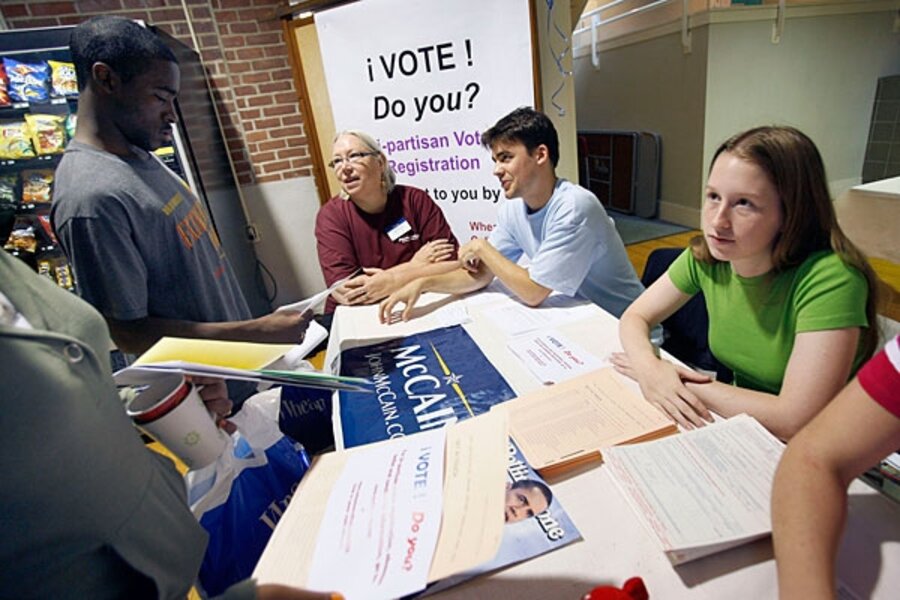2008 US election: What youth revolution?
Loading...
In the fall of 2008, Adam Zion and thousands of others helped eligible voters fill out registration forms in the hopes of securing record voter turnout and legions of new voters for their candidates.
It felt historic, important.
"If you make an effort, if you talk to people, if you get them registered to vote, that gives them a foot in the door," Mr. Zion says.
But for all the talk about Obama's ability to mobilize armies of volunteers for his campaign, new figures recently released by the Census Bureau suggest that the much-discussed youth revolution never quite materialized in the voting booth.
Voter turnout for 18- to 24-year-olds increased, but only by about 2 percent compared with 2004 election numbers.
The rise is not insignificant, but it was "not as much as we were expecting prior to the election," says Michael McDonald, associate professor of government and politics at George Mason University in Washington, D.C.
Historically, "there's been a strong correlation between age and propensity to vote," Professor McDonald says. Many young voters have to register or make arrangements for an absentee ballot because they are away at college in November. This can deter younger voters. Additionally, young people are traditionally not as rooted in their communities as older generations.
But while 2008 youth voter turnout may not have reached expected levels, "the good news from the current population survey is that the electorate became more representative of the US population as a whole," McDonald says.
In other words, because the voter turnout for older, white voters remained constant while younger and minority voters increased, the overall make up of the electorate now more closely mirrors the US population.
In 2008, 2 million more African-Americans voted than in 2004. McDonald calls this a "healthy increase," adding that "it's close to achieving parity" with white voter turnout.
Still, it's not a perfect reflection. "The bad news," he says, "is that inequalities continue to persist in the electorate as well."





